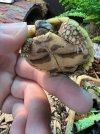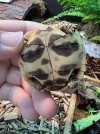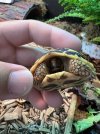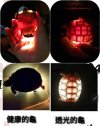- Joined
- Sep 23, 2012
- Messages
- 716
3 months is plenty of time for them to have had issues when you bought them. I can’t say with any certainty that this is the case, but they did not have all that much growth (for their age) when you got them. How did the breeder keep them? If there were issues there, that would be a big concern. If so, you want to get any replacement hatchlings ASAP after they hatch so you can avoid that potential issue.
Swapping out enclosures twice certainly did not help you, nor would adding the other two. This species stresses somewhat easily and you keep creating new reasons for them to become stressed.
My next question is: Did you measure temps everywhere in these enclosures (say with an IR thermometer)? I’m wondering with them initially being so inactive, if they were bedding down in areas that were cooler than your thermometer showed (say down in the 70’s) and waiting for conditions to improve. As Mark said they really like to be in the 90s in the daytime. I do not think they’d be dying if they were staying in the 80-85 range but it is definitely on the cooler end for the species, and if temps are much lower in some dark corners of the enclosure it could explain the results you’re seeing.
Steve
Swapping out enclosures twice certainly did not help you, nor would adding the other two. This species stresses somewhat easily and you keep creating new reasons for them to become stressed.
My next question is: Did you measure temps everywhere in these enclosures (say with an IR thermometer)? I’m wondering with them initially being so inactive, if they were bedding down in areas that were cooler than your thermometer showed (say down in the 70’s) and waiting for conditions to improve. As Mark said they really like to be in the 90s in the daytime. I do not think they’d be dying if they were staying in the 80-85 range but it is definitely on the cooler end for the species, and if temps are much lower in some dark corners of the enclosure it could explain the results you’re seeing.
Steve





